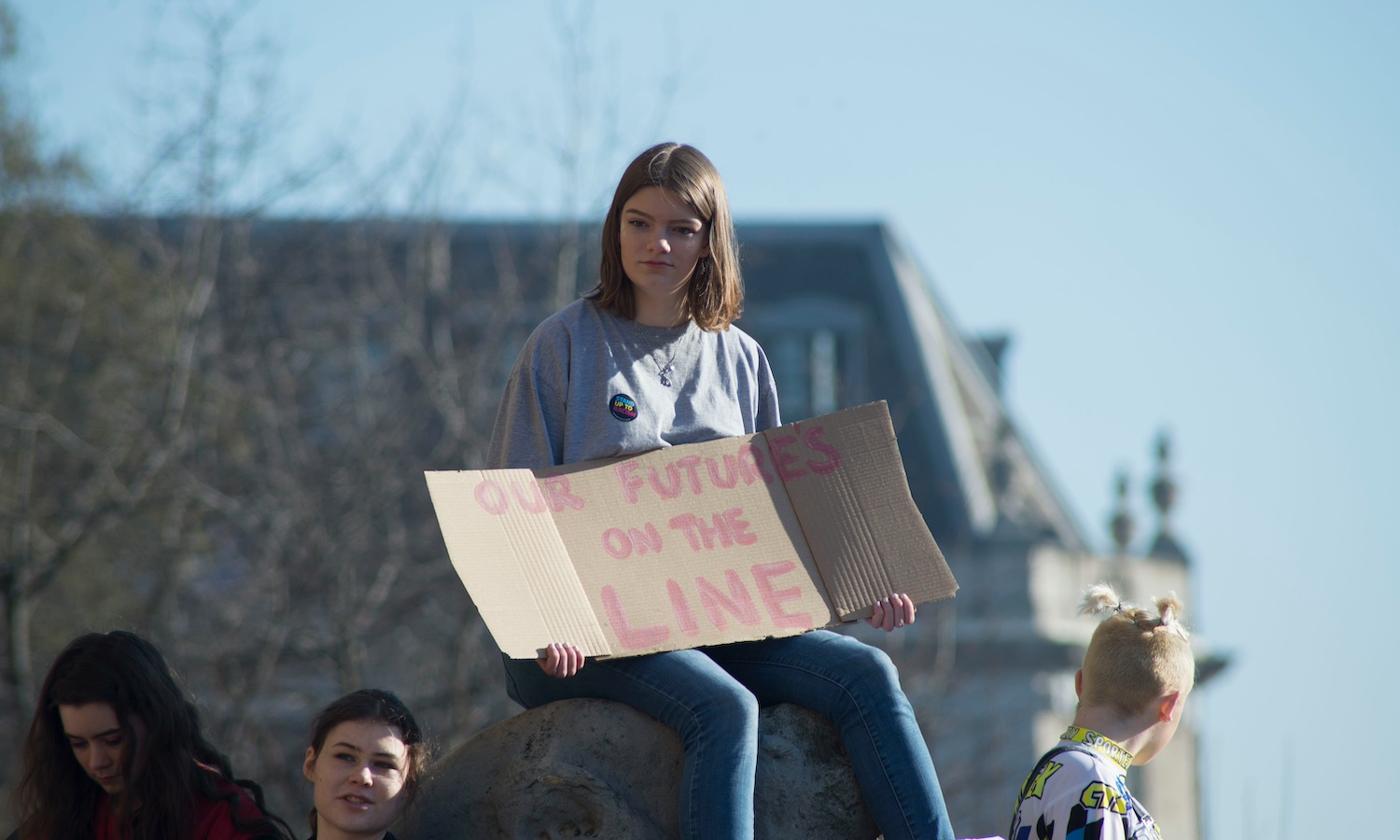Students across the United States are campaigning for The Green New Deal for Schools. Through their advocacy, they hope to influence climate education and disaster plans in school districts that will prepare students and their schools for the future.
“I think it’s such an important campaign that could really make education so much more relevant,” Tim Swinehart, Social Sciences High School Teacher at Lincoln High School in Portland, Oregon tells Food Tank.
The Green New Deal for Schools, led by the youth climate justice organization Sunrise Movement, aims to create safe, clean, and climate-prepared schools for young people. Among their demands are school buildings that are climate resilient, free and healthy lunch for all students, and a curriculum developed by educators, scientists, and students that adequately addresses the climate crisis.
“It would mean that K12 education would be better equipped to prepare students both for the world that they currently inhabit, as well as the one they will experience in the future,” says Carolyn McGrath, Visual Arts Teacher at Hopewell Valley Central High School in Pennington, New Jersey.
Students often find themselves excluded from the decision-making processes, the Sunrise Movement argues. But the Green New Deal for Schools offers them a platform to reshape the U.S. K-12 public school system. The campaign empowers youth, encouraging them to call on school district leaders to pass district-wide policies that will allow all students to attend safe, clean and climate resilient schools.
“An interdisciplinary approach to climate justice education is necessary and it’s helpful when teachers also support because it shows we’re all on the same side on this,” Chloe Gilmore, a Senior at Lincoln High School and a climate activist tells Food Tank.
She believes that the Green New Deal is different from traditional approaches. “Typically, we learn about climate change from a perspective of…individual actions we can take rather than ways we can transform our cities and our country in a systemic way,” Gilmore tells Food Tank.
The Sunrise Movement hopes to show that the campaign is the key to confront the climate crisis and mobilize young people to advocate for political action and promote environmental justice.
“Curriculums around climate change should be in every subject, not just the environmental studies classes or the science classes,” says Mackenzie Feldman, Founder and Project Director of Re:wild Your Campus.
Representative Jamaal Bowman, from New York, and Senator Ed Markey, from Massachusetts, first introduced the Green New Deal for Public Schools Act to provide US$1.6 trillion to public schools. The act will invest, over the next decade, into the future of students by making a healthy, safe, supportive school environment.
McGrath believes, that schools “need to update curricula to help students understand the causes and impacts of a changing climate.”
And Swinehart argues that scale is important. “This isn’t something that can only happen in isolated school districts, it has to be happening at state levels and has to be happening at the national level.” He also notes that “one of the things we have to really push for when we talk about climate curriculum and climate justice curriculum, is it has to be an empowering curriculum.”
As one of the largest federal investments in racial equity in education, the Sunrise Movement reports that this act would create 1.3 million jobs annually and decrease U.S. carbon emissions by 78 metric tons per year. The legislation would also provide funding to support schools to expand, develop new curricula, and a greener campus.
“The Green New Deal for Schools is an opportunity to revamp both the physical and internal structures in our educational institutions,” says McGrath.
Articles like the one you just read are made possible through the generosity of Food Tank members. Can we please count on you to be part of our growing movement? Become a member today by clicking here.
Photo courtesy of Josh Barwick, Unsplash






